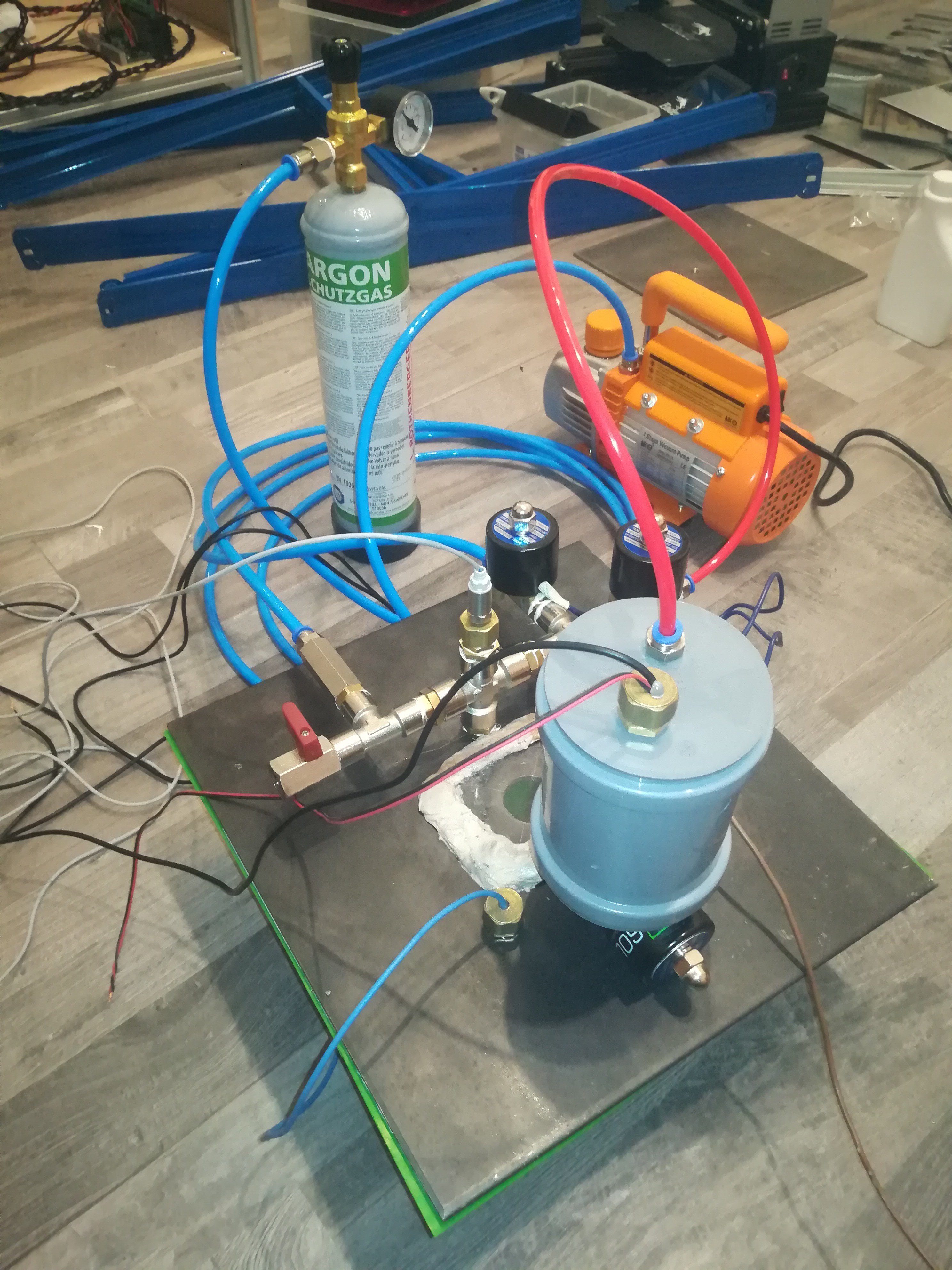
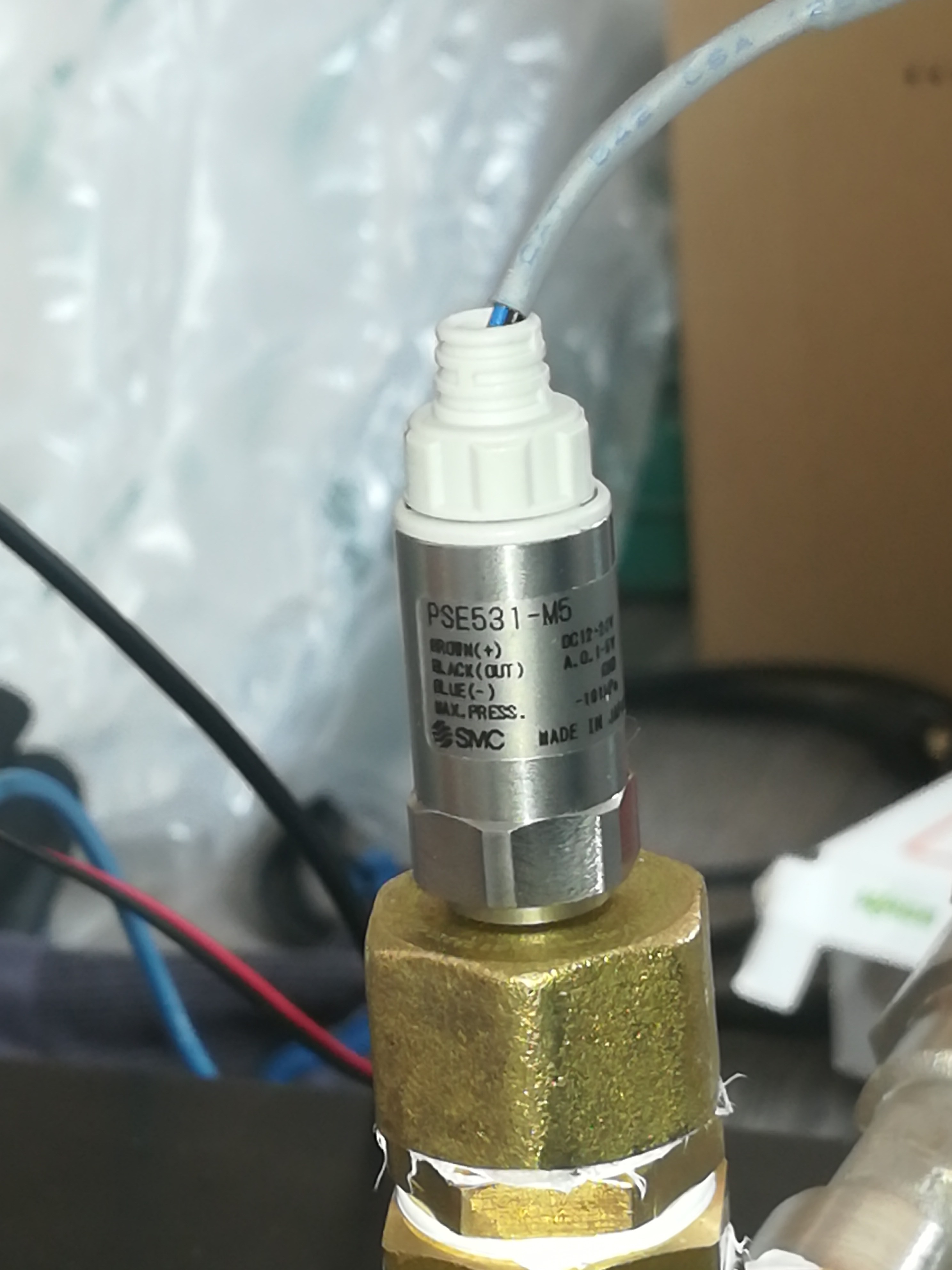
A pressure sensor with a range from 0 to -101kPa and an output from 1 to 5VDC.
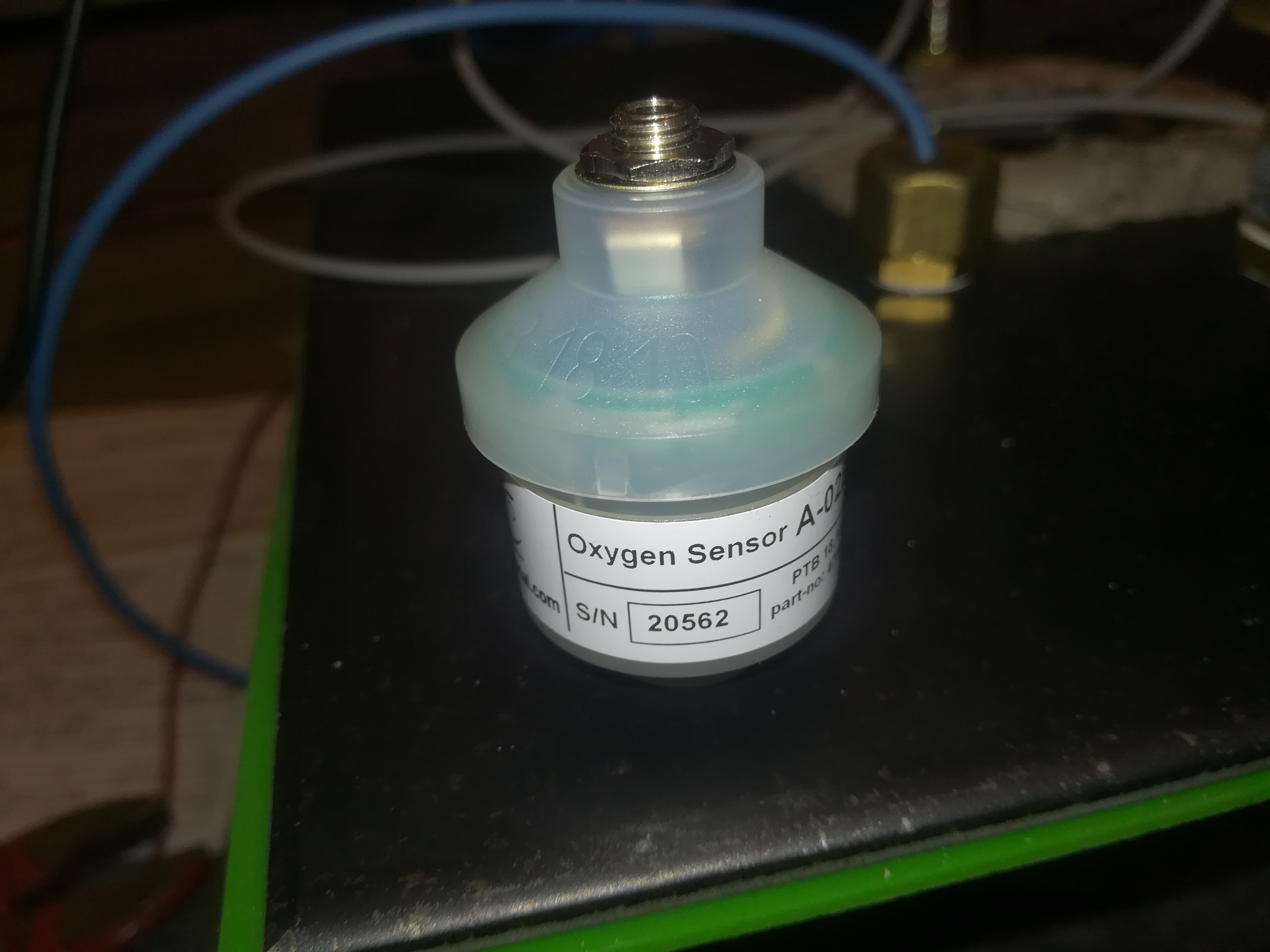
An oxygen sensor with a range from 0 to 25Vol% and an output from 9 to 13mVDC.
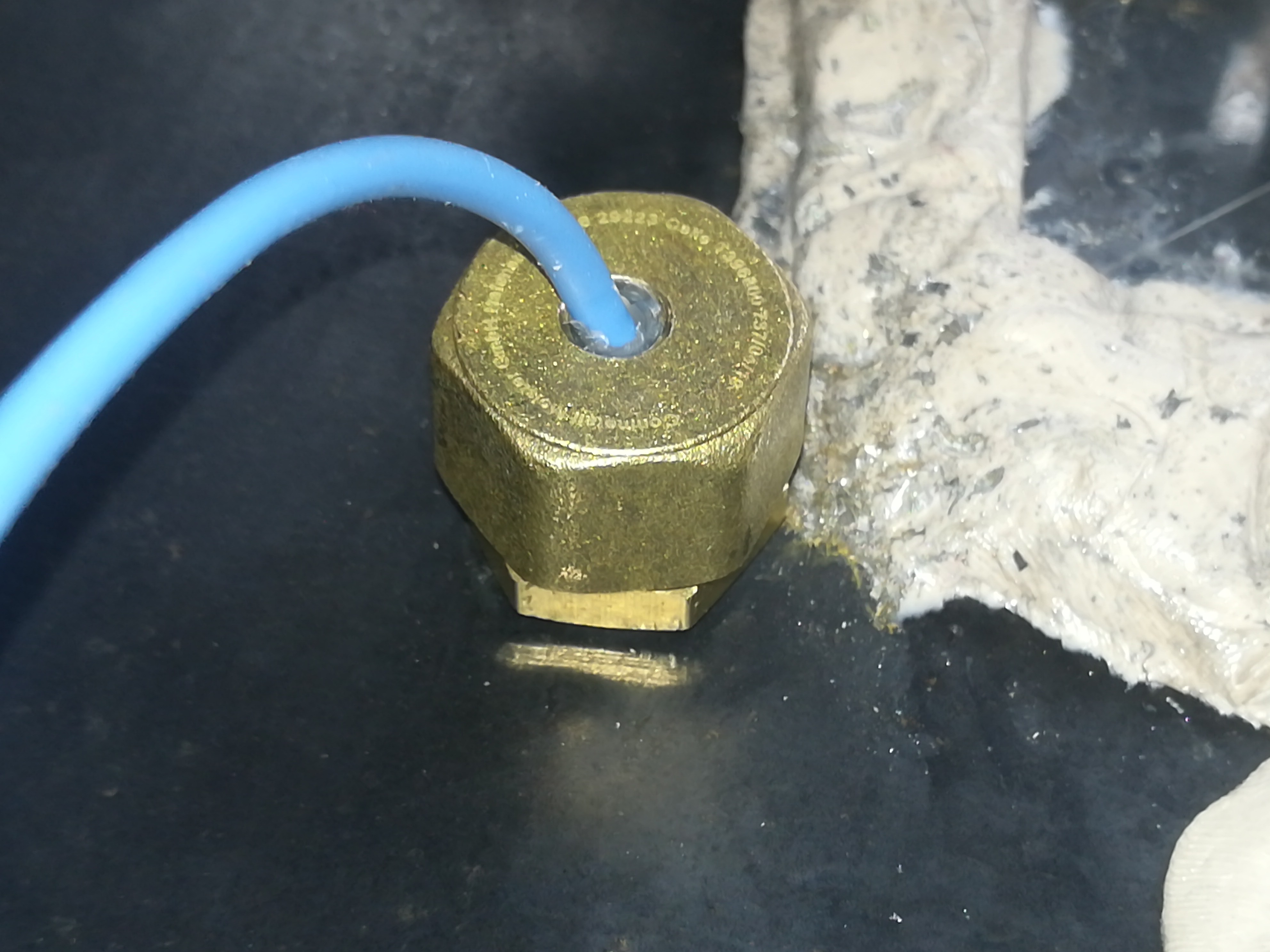
Better cable entrys made of 1/4 to 3/8" fittings + cap with a hole in it sealed with hot glue.
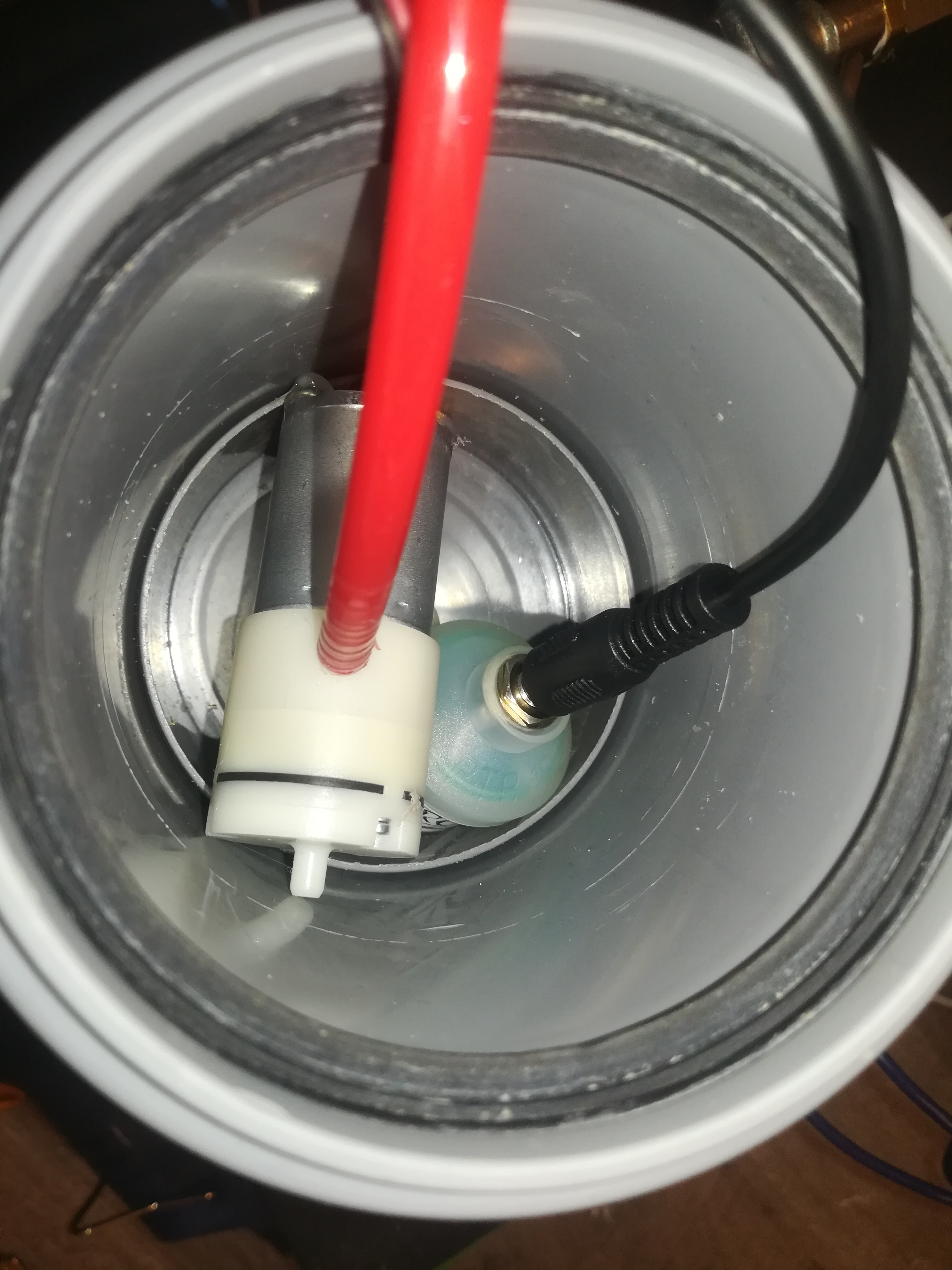
A small 12VDC air pump to pump the chamber's atmosphere to the sensor.
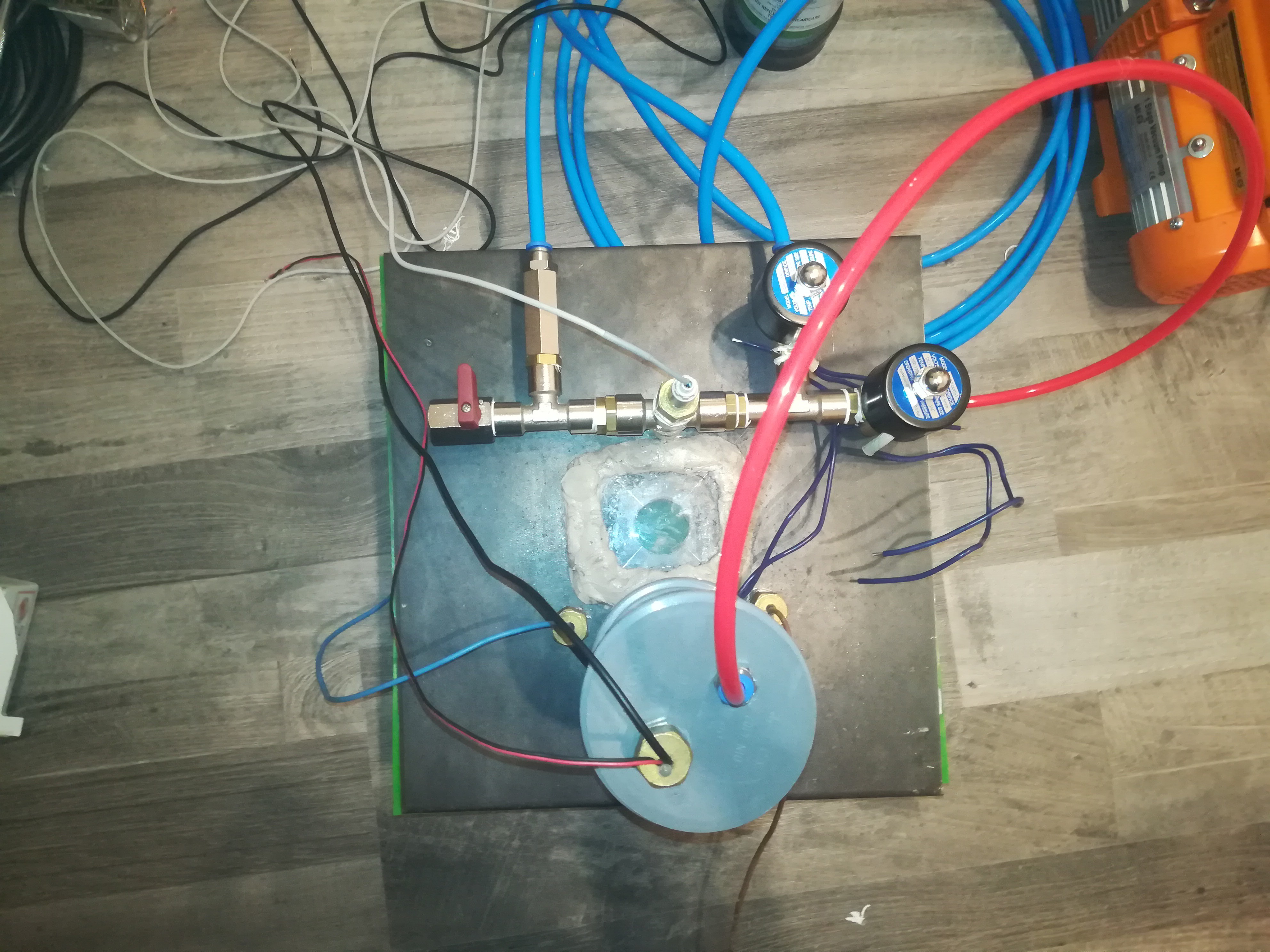
And some other parts including 3 solenoid valves, a one way valve, tube connectors, a separate chamber for the oxygen sensor and pump and another cable entry.
Measuring the pressure from 0 to -101kPa to get a 1 to 5VDC output is very easy with the pressure sensor.
Not as easy is measuring the oxygen level.
I looked for oxygen sensors which can work in a vacuum and figured out that they are very rare and expensive. There are the zirconium ones which I could find only for business customers for multiple 1000$ and the optical ones with fluorescent patches and scanners which I also could not find for private customers with the same high prices (The patches are a bit cheaper).
So I decided to buy a much cheaper galvanic cell type oxygen sensor that works from 700 to 1750hPa. This type of sensors get used for critical applications like ventilators, diving rebreathers and car exhaust measurements and should therefore be accurate enough for this application. The sensor got placed in a small chamber made from HT 75 pipe, that is separated by two solenoid valves from the rest of the system.
Measuring Oxygen:
To measure the oxygen level the machine should perform the following tasks:
- Turn on the vacuum pump to get the vacuum chamber to the lowest pressure level and turn off the pump when pressure is reached.
- Open the shielding gas solenoid valve to fill the vacuum chamber back up again until the pressure is >700hPa and close the valve when pressure is reached.
- When the pressure is ≥700hPa open the two solenoid valves to connect the oxygen sensor chamber with the vacuum chamber and turn on an air pump to carry the vacuum chamber's atmosphere to the oxygen sensor. 700hPa should still be enough negative pressure to keep everything sealed so that no air can enter the system.
- Wait some time to perform the measurement.
- Bring the vacuum chamber back to the lowest pressure.
- When the pressure is <700hPa close the valves and turn off the pump.
- If the oxygen level is OK start/continue operation.
- If the oxygen level is not OK repeat the measurement or hold the program and show an error (The same with unexpected pressure readings and timeouts).
At the moment the system is untestet and I still need to build a controller for the system with relays for the solenoid valves and pumps and an amplifier for the oxygen sensor (the pressure sensor can be measured directly by the microcontroller).
Hope that it will work as planned :)
 Dominik Meffert
Dominik Meffert
Discussions
Become a Hackaday.io Member
Create an account to leave a comment. Already have an account? Log In.